Avalanche Software’s Hogwarts Legacy allows players to explore J.K. Rowling’s fantastic Harry Potter universe in an open-world role-playing setting. As the game’s main character, you select your House and appearance, develop relationships with students and more.
For many fans of the series’ books or films, it’s the Wizarding World video game they’ve been waiting for.
I covered the controversial title for MobileSyrup, explored its detailed world and completed the main story. Overall, I had a lot of fun with the game. However, before and while I played Hogwarts Legacy, I felt conflicted because of Rowling’s stance on the transgender community.
For those unaware of the controversy, in 2020, Rowling made an egregious comment on Twitter in response to an opinion piece.
Rowling’s tweet implied that “people who menstruate” are “women,” disregarding that not all women menstruate — including trans women.
Since then, Rowling has used her expansive platform to promote her anti-trans views several times. For example, Rowling’s anti-trans stance stems from her belief trans women aren’t women and should be treated differently. Rowling, who is a survivor of sexual abuse, also claims she wants women to be safe in bathrooms, perpetuating the stereotype that trans women are predators. U.S. politicians have even cited Rowling’s rhetoric when pushing back against pro-LGBTQ+ bills.
The author continues to vocally spread her beliefs, causing harm to those in the trans community, and because of this, many that were once fans of Rowling’s work have turned away from anything to do with the Wizarding World, including Hogwarts Legacy.
With all that said, I want to dive into the controversy surrounding the title to unpack my conflicted feelings about the game, and also to educate our readers about the issues trans women face.
If you want suggested readings from trans writers to better understand why Hogwarts Legacy is so controversial, follow this link.
Are you anti-trans if you play Hogwarts Legacy?
While I don’t believe playing Hogwarts Legacy directly means you hold an anti-trans stance, many disagree with this sentiment.
“Any support of the Harry Potter franchise current projects while J.K. Rowling is in charge of it and using her ongoing platform to target and also justify her continued targeting of trans people is harmful to trans people,” tweeted YouTuber and writer Jessie Earl.
Even though Rowling didn’t create the game herself and wasn’t involved in its development, she still financially benefits from Hogwarts Legacy‘s sales and created the world the game is based on, as noted by Bloomberg‘s Jason Schreier.
Hogwarts Legacy started development in 2018, with job listings tied to the title appearing as early as 2017. As noted earlier, J.K.’s cruel tweets about the trans community started in 2020; before this, most were unaware of her anti-trans beliefs.
Unfortunately, boycotting Hogwarts Legacy won’t hurt Rowling — a billionaire with many revenue streams aside from Hogwarts Legacy — as much as it will the developers who created the game and signed onto the project before her statements and blog post. If not hurt monetarily, having all your efforts go to waste can be a cause of pain.
Some might argue the development team at Avalanche Software, and even the voice actors, should have just left their jobs when the author’s beliefs came to light. But this a privileged way to look at the situation, given leaving your job is not a viable option for many, especially amid the height of the COVID-19 pandemic and the impending economic recession.
The voice actor for the masculine-gendered Hogwarts Legacy character, Sebastian Croft, tweeted this before the game’s launch (check out the tweet below). Croft also stars in Heartbreakers, a Netflix show focused on a group of LGBTQ+ teens.
I echo Croft’s beliefs. When I purchased Hogwarts Legacy, it didn’t improve Rowling’s life. She’s already a billionaire, and the royalties she’ll earn from Hogwarts Legacy won’t change that.
Hogwarts Legacy also doesn’t actively spread hatred and strives to be inclusive in several ways. For instance, the title allows users to create their own in-game avatar, make that character look exactly how they want, and change their voice to sound more feminine or masculine. Unfortunately, you still need to identify as a ‘witch’ or ‘wizard,’ which disregards other genders in a sense, such as those that are genderfluid or non-binary.
The game also features a trans character that is reportedly voiced by a trans woman. However, some reports indicate that this character was just added to appease fans upset about Rowling’s comments. Further, some criticize the character for their name, ‘Sirona Ryan,’ which can be coded as ‘Sir Ryan.’ With the Harry Potter novels featuring characters named Cho Chang and Kingsly Shacklebolt, this, admittedly, isn’t a good look for Hogwarts Legacy, although others have pointed out that “Sirona” is actually an old Celtic name for a goddess.
Despite the lack of racial diversity in Harry Potter stories (except for the aforementioned few with racist names), Hogwarts Legacy does a good job of including people from different walks of life and cultures. The friend that the playable character makes from Gryffindor, Natsai “Natty” Onai, is from Africa, where they don’t need to use wands to cast spells. Other classmates and teachers are also from different races, such as Japanese Broom professor Chiyo Kogawa, Korean caretaker Gladwin Moon and Indian Charms Master Abraham Ronen.
It’s also worth mentioning that the game focuses on a goblin rebellion, and some are prejudiced against goblins in the title. Goblins aren’t a race, so you can’t be racist towards a goblin; however, since the early books, many have related goblins to Jewish people, due to specific stereotypes. It’s worth noting that goblins in many sources of fantasy literature and games are shown similarly.
Jason Schreier, a Jewish journalist, doesn’t feel Hogwarts Legacy is antisemitic but finds the game overall “dull.”
Some who worked on the game also don’t agree with purchasing the title, including Parker Hartzler.
While buying Hogwarts Legacy doesn’t make a notable difference to Rowling’s bank account, there’s a valid argument that, as an ally, you should avoid supporting Rowling in any shape or form. The Gamer editor-in-chief Stacey Hanley holds this view and said the following:
“On the other, you have a much smaller, already marginalized group, pointing out that buying, streaming, or praising the game gives money, a further platform, and a longer future to J.K. Rowling, who is on the record saying she feels empowered that people support her beliefs because they keep buying her products.”
However, some trans people still purchased the title. Mitch Burdett, a 23-year-old trans man, spoke to Washington Post regarding his dilemma surrounding the game:
“For a while, Burdett said, he faced a crisis with how to move forward with his love of the series. Then, after talking to his mom and considering what others were saying, he decided — like many other fans — to renounce Rowling but continue to enjoy the world she built. “She doesn’t rule the wizarding world; it was just her creation,” Burdett said. “What we as fans, readers, watchers, gamers decide to do with that world is entirely separate from her or any beliefs she may have.”
Ultimately, there’s no clear-cut answer regarding how a game like Hogwarts Legacy should be approached. Some trans people and allies are okay with separating the art from the artist, while others, understandably, are not.
I really enjoyed my time with Hogwarts Legacy, but I also understand if you’re vehemently against playing it.
I know several people who are afraid to talk publicly about enjoying the game (or even playing it at all) due to concerns about fear or hatred from the trans community. People like the couple behind ‘Girlfriend Reviews’ cried over reported bullying after playing the game. There’s also a platform that can find anyone who streams the game, so you can block them.
It’s important to point out the trans community has experienced more fear and hatred than most can likely imagine, and they didn’t choose to be trans, while you chose to play Hogwarts Legacy. I personally don’t support extremists on either side of the coin, or the bullying and harassment.
I stand with transgender people, and I’m a part of the LGBTQ+ community myself. I don’t feel that I’m transphobic because I’ve covered and enjoyed Hogwarts Legacy, but I’m also still very conflicted and want to highlight that trans people continue to face a lot of hate from J.K. Rowling and her supporters.
If you are unsure about how to feel, just know that supporting the trans community in itself is the right move.
Below are several notable LGBTQ+ notable organizations you can learn from and support, including:
- Canadian Professional Association for Transgender Health (CPATH) — the largest national multidisciplinary, professional organization in the world, which aims to support trans and gender-diverse people
GLAAD — an organization aiming to support the LGBTQ+ community in general
- Trans Lifeline — a grassroots organization offering direct emotional and financial support to trans people (Canadians can dial 1-877-330-6366)
- Trans Pulse Canada — a community-based survey of the health and well-being of trans/non-binary people in Canada
- Bridges4Life — a Black lead non for profit to support Black Trans Youth.
- In the past, I’ve chosen to support The Trevor Project — Trevor Project provides 24/7 support for LGBTQ youth in crisis
Image credit: Warner Bros.





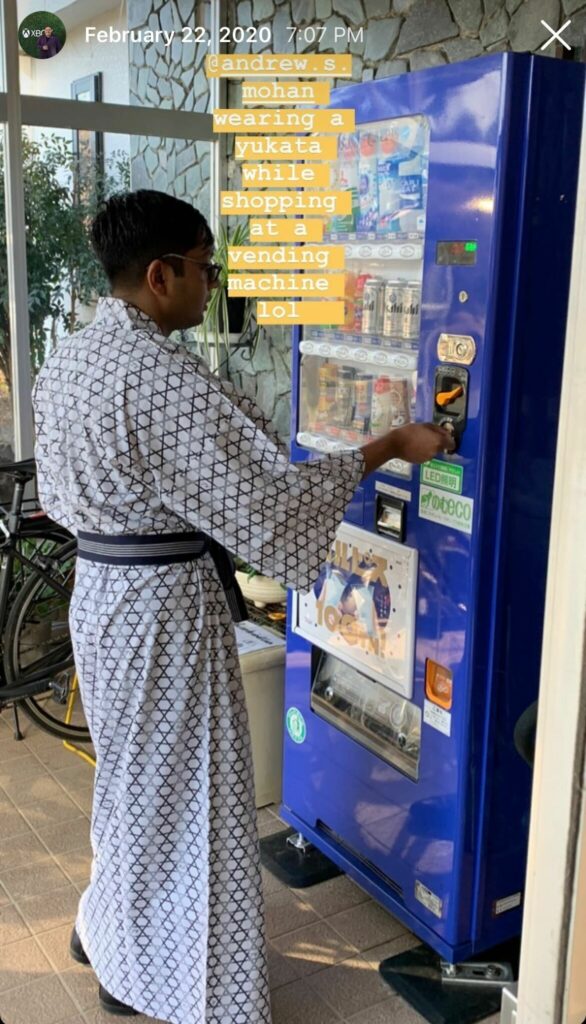 However, the world changed shortly after returning home (can you believe that the COVID-19 pandemic started three years ago?), and so did the trajectory of my life. Suddenly, travelling to Japan seemed lightyears away and the itch to experience even a little bit more of the country grew stronger.
However, the world changed shortly after returning home (can you believe that the COVID-19 pandemic started three years ago?), and so did the trajectory of my life. Suddenly, travelling to Japan seemed lightyears away and the itch to experience even a little bit more of the country grew stronger.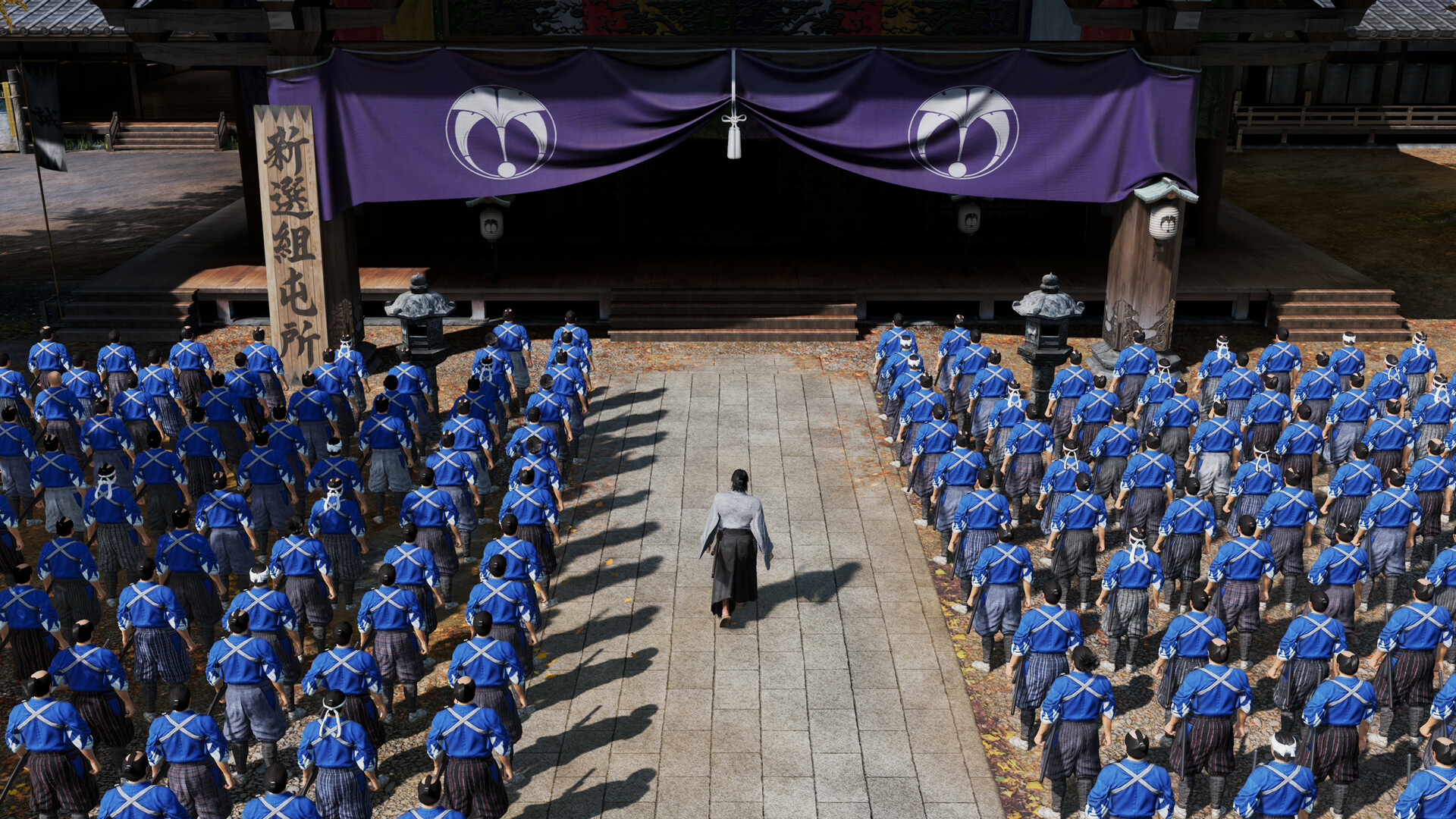
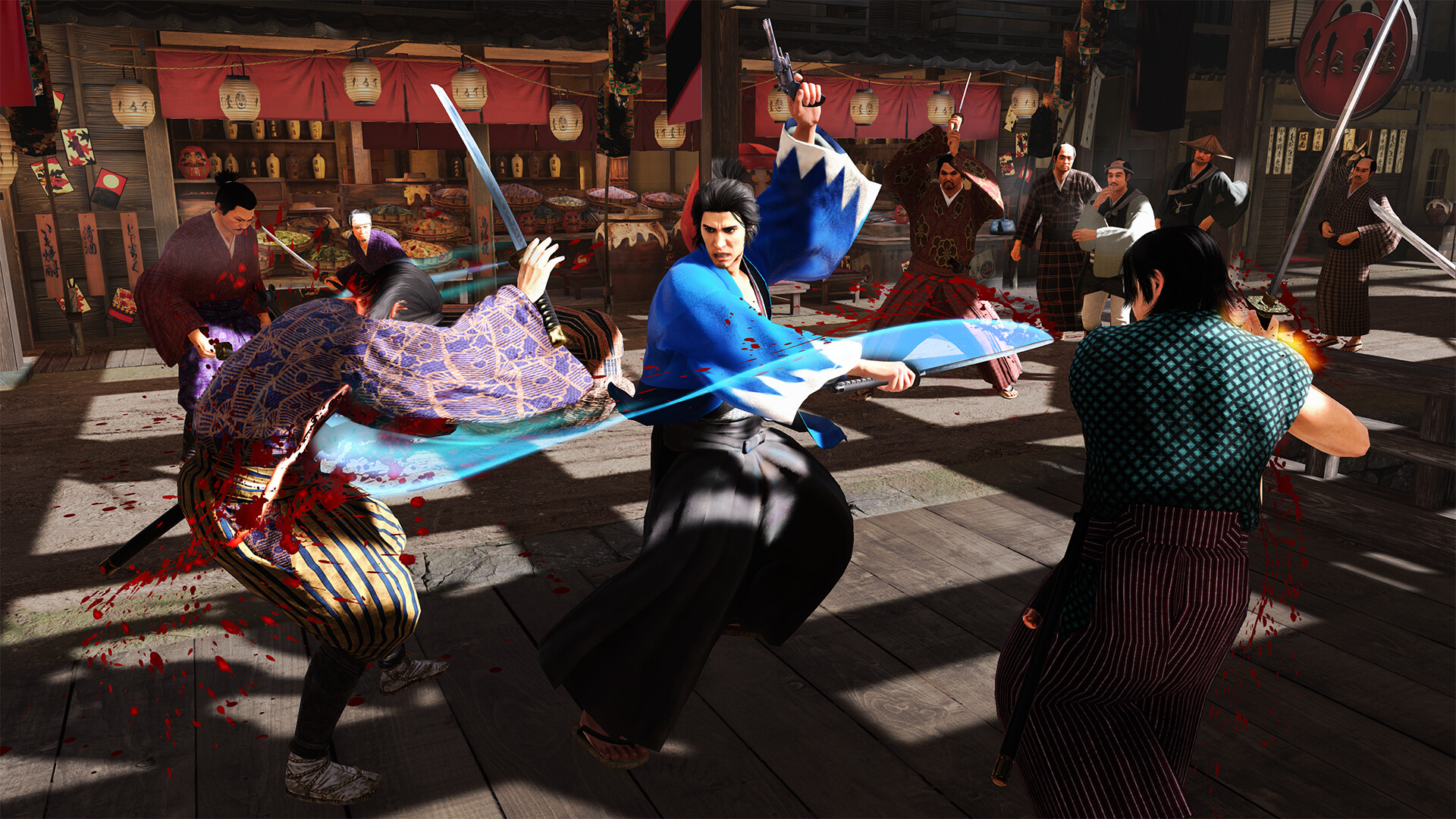


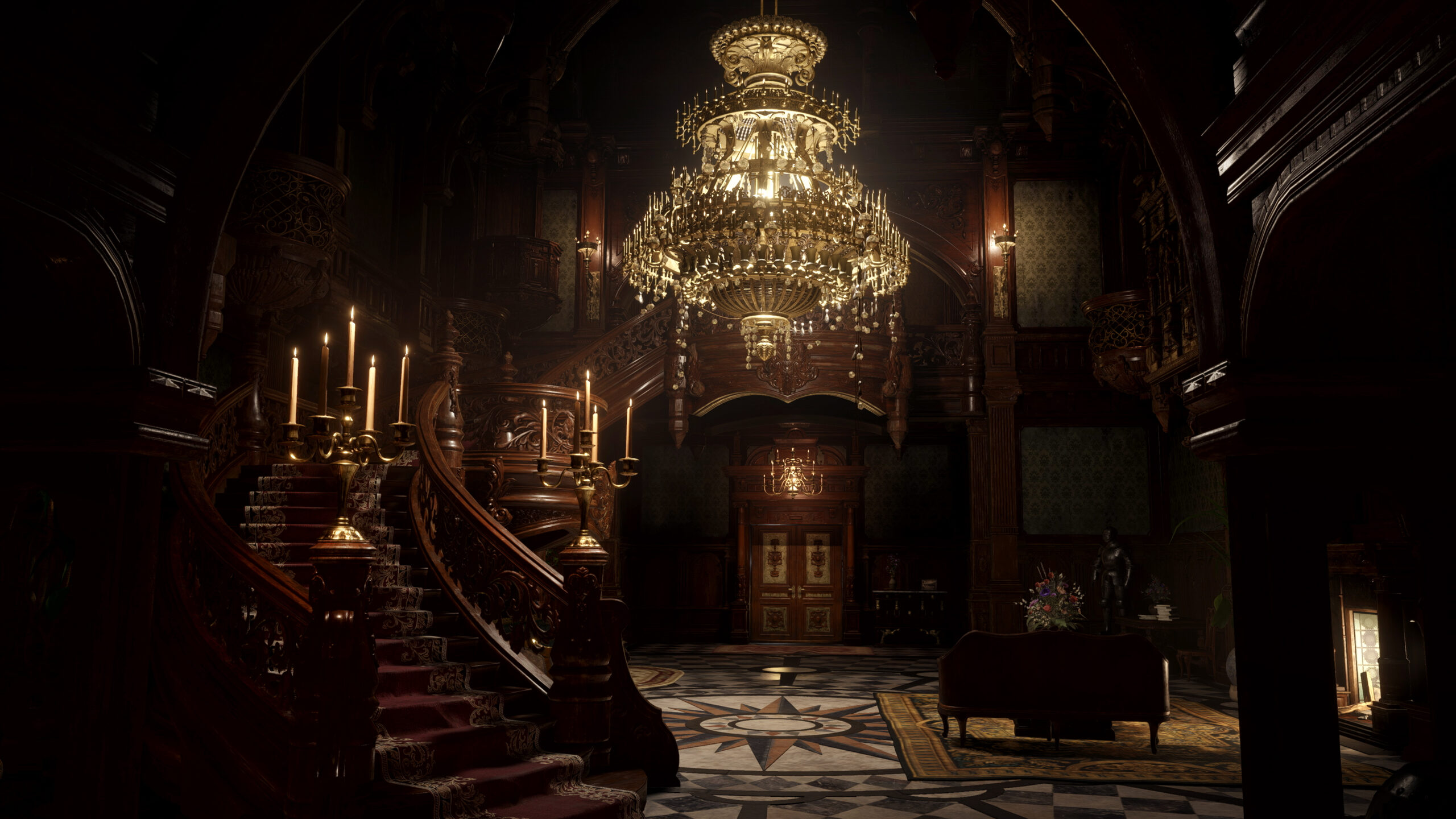 More importantly, though, VR dramatically builds upon Village‘s already satisfying gameplay mechanics. As mentioned, RE7 in VR was limited to the DualShock 4, which made the headset feel more like an add-on than the actual main event. Village, on the other hand, is playable entirely with the PS VR2’s comfortable motion-controlled Sense gamepads — a setup that offers two key benefits.
More importantly, though, VR dramatically builds upon Village‘s already satisfying gameplay mechanics. As mentioned, RE7 in VR was limited to the DualShock 4, which made the headset feel more like an add-on than the actual main event. Village, on the other hand, is playable entirely with the PS VR2’s comfortable motion-controlled Sense gamepads — a setup that offers two key benefits.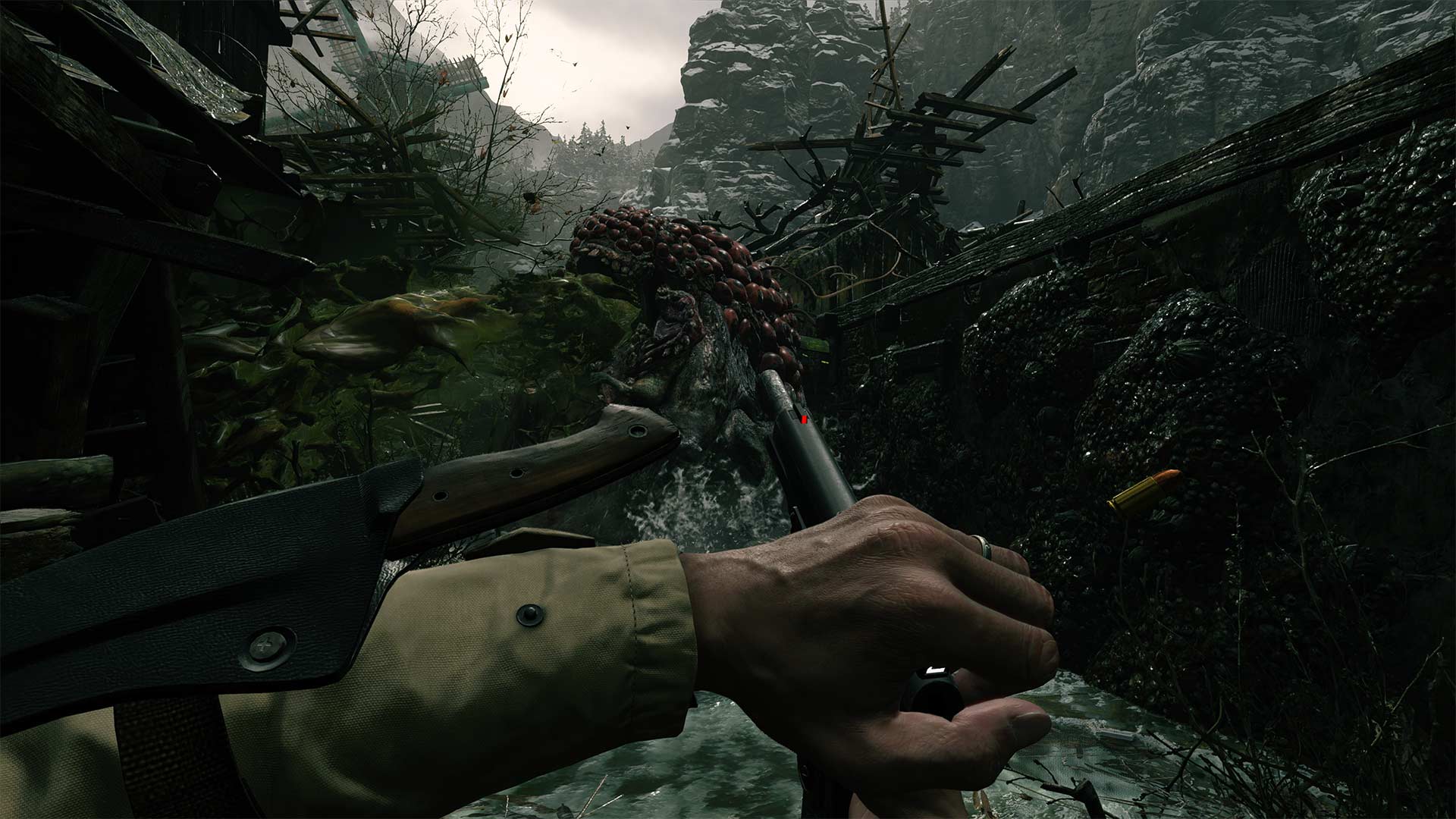 And on that note — first-person gunplay with the Sense controllers is an absolute blast. So much so, in fact, that it’s hard to believe I ever settled for using a controller and VR setup with RE7. That’s because it feels so intuitive. Naturally, aiming anything with motion controls will automatically feel more immersive than analogue sticks, and that’s before you factor in the differences between each gun. For example, reloading your handgun means you have to physically grab a clip from your hip, push it into the bottom of your firearm and then pull back the slide on top. Your shotgun, meanwhile, requires you to load shells one at a time and then pump the barrel between each shot.
And on that note — first-person gunplay with the Sense controllers is an absolute blast. So much so, in fact, that it’s hard to believe I ever settled for using a controller and VR setup with RE7. That’s because it feels so intuitive. Naturally, aiming anything with motion controls will automatically feel more immersive than analogue sticks, and that’s before you factor in the differences between each gun. For example, reloading your handgun means you have to physically grab a clip from your hip, push it into the bottom of your firearm and then pull back the slide on top. Your shotgun, meanwhile, requires you to load shells one at a time and then pump the barrel between each shot. Honestly, my only gripes with Village‘s VR version are pretty minor. You have to download a separate free file on the PlayStation Store that works alongside your copy of the base game, so your previous saves unfortunately can’t be carried over. There are also some jarring moments in cutscenes where Ethan may automatically move where you’re not looking, resulting in some brief disorientation. On the whole, it’s a lot smoother and more natural than RE7, leading me to feel no motion sickness, but these (few and far in between) instances are still worth mentioning.
Honestly, my only gripes with Village‘s VR version are pretty minor. You have to download a separate free file on the PlayStation Store that works alongside your copy of the base game, so your previous saves unfortunately can’t be carried over. There are also some jarring moments in cutscenes where Ethan may automatically move where you’re not looking, resulting in some brief disorientation. On the whole, it’s a lot smoother and more natural than RE7, leading me to feel no motion sickness, but these (few and far in between) instances are still worth mentioning.



